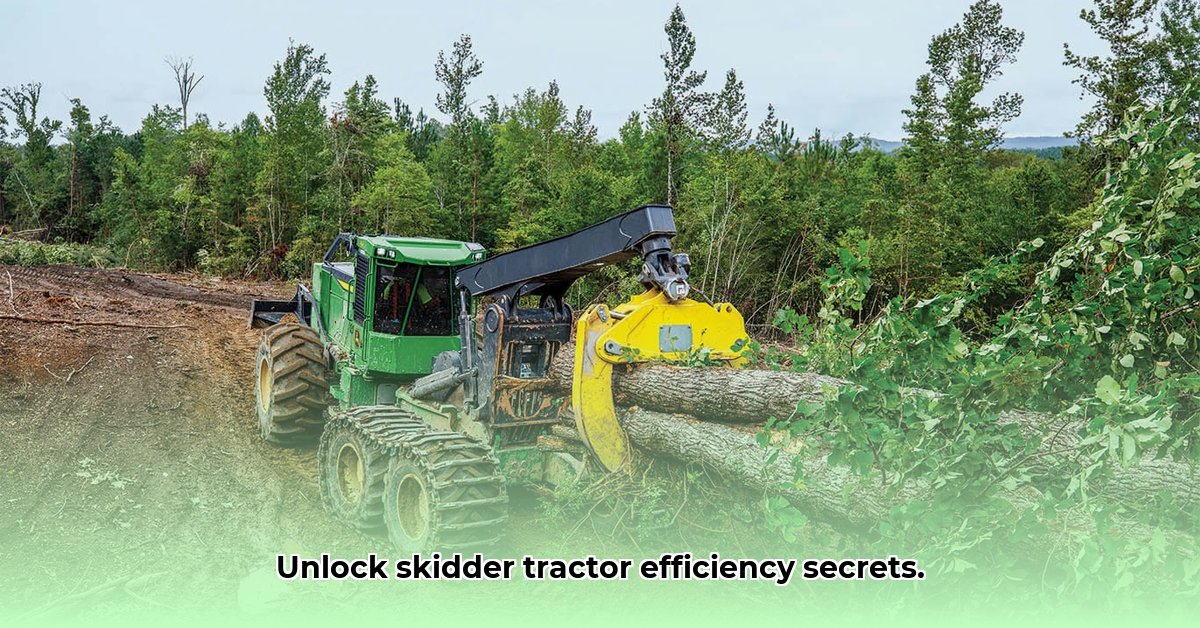
Skidder Tractor: Your Guide to Efficient and Eco-Friendly Logging
Sustainable forestry practices are crucial for a healthy planet, and skidder tractors play a vital role in achieving this goal. This comprehensive guide explores how to optimize skidder tractor use for maximum efficiency while minimizing environmental impact. We’ll cover choosing the right machine, understanding winch technology, implementing sustainable practices, and adhering to safety regulations. Whether you're a seasoned logger or just starting, this guide provides the knowledge needed for responsible and effective forestry. Learn more about sustainable land clearing equipment at this helpful resource.
Understanding Skidder Tractors: The Workhorses of Sustainable Forestry
Skidder tractors are heavy-duty machines designed to move felled trees from the harvest site to a designated collection point. Their role extends beyond simple transportation; they are integral to sustainable logging, balancing timber production with environmental preservation. There are various types, each suited for different terrains. Wheel skidders excel in less rugged areas, prioritizing maneuverability. Tracked skidders, however, are ideal for steep slopes and challenging landscapes due to their superior traction. Choosing the appropriate type is critical for efficiency and minimizing environmental damage. Isn't it crucial to select equipment matched to the task for optimal performance and sustainability?
Winch Technology: The Key to Efficient and Safe Logging
The winch system is the core of a skidder, responsible for pulling logs. Traditional manual winches offer direct control, while wireless winches enhance safety by allowing remote operation, reducing operator exposure to hazards. Both systems require skilled operation. The choice depends on factors such as budget, terrain complexity, and the specific requirements of operations, underscoring the importance of a thorough evaluation of the available systems. What factors are most important for your logging operation?
Minimizing Environmental Impact: Best Practices for Sustainable Logging
Sustainable forestry aims to balance timber harvesting with environmental protection. Skidder tractors can significantly impact the environment if not used responsibly. Excessive ground pressure leads to soil compaction, hindering water infiltration and increasing erosion. Furthermore, high fuel consumption increases greenhouse gas emissions. However, several practices mitigate these negative effects. Careful route planning, minimizing ground disturbance, and using fuel-efficient machines are key strategies for environmentally conscious logging. Research suggests that adopting alternative fuels like biofuels could dramatically reduce the environmental footprint, a promising area for future industry development.
Choosing the Right Skidder Tractor: A Decision-Making Framework
Selecting a skidder is a substantial investment. The ideal choice depends on terrain, log size, budget, and operational needs. Consider these factors:
- Terrain: Steep slopes necessitate tracked skidders; gentler terrain allows for wheel skidders.
- Log Size: Larger logs require higher winch capacity and greater machine strength.
- Budget: Balance initial cost with long-term maintenance and operating expenses.
- Operational Needs: Logging volume and distance to landing influence capacity and fuel efficiency requirements.
Operator Safety and Training: A Priority for Sustainable Forestry
Skidder operation demands proper training to ensure both operator safety and efficient work. The inherent risks associated with operating heavy machinery necessitates comprehensive training programs, covering safe operation procedures, regular safety checks, and preventative maintenance. Remember, safe operation not only protects the operator but also enhances operational efficiency and safeguards the environment. What resources are available to you for comprehensive operator training?
Maintenance and Long-Term Costs: Ensuring Equipment Longevity
Regular maintenance is essential for extending equipment lifespan and maximizing efficiency. Preventative maintenance reduces costly repairs and downtime, maximizing return on investment. A proactive approach to maintenance translates to greater cost effectiveness and reduced environmental impact associated with premature equipment failure.
Government Regulations and Incentives: Supporting Sustainable Practices
Governments often implement regulations and incentives to promote sustainable forestry. These policies can influence equipment choices and operational practices. Staying informed about relevant regulations and incentives is important for responsible forestry operations. Are there any governmental incentives available to you to support the adoption of sustainable logging practices?
Conclusion: A Path Towards Sustainable Forestry
Sustainable forestry requires careful planning and responsible equipment use. Skidder tractors, while powerful tools, must be operated efficiently and sustainably. By following best practices, prioritizing safety, and leveraging available resources and incentives, loggers can significantly minimize environmental impact. The long-term health of our forests depends on this commitment to sustainable logging practices.